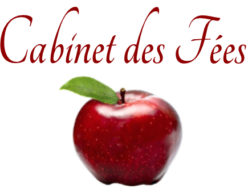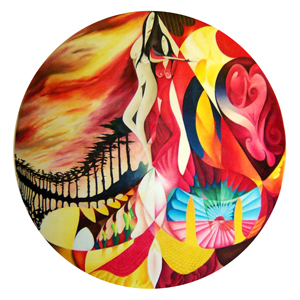 The cover art for the 14th issue of Scheherezade’s Bequest was provided by Catherine Rémy, a visual artist who draws inspiration from landscape and myth. Her work has been exhibited at the Chatham Arts Centre, Covent Garden’s Jubillee Centre, the Medway Arts Centre, the Cornflower Gallery, in Stuckist shows and in a number of books and magazines. Born Rémy Noë, Catherine experienced gender dysphoria at an early age and escaped into art as a means of coping with her condition. In her own words: “As my paintings are such different styles, which confuses art galleries, I use two names for the two difrent styles. Rémy Noë for the landscape work, and Catherine Rémy for my mytholgical work.” So, while you can find Rémy Noë on Wikipedia, it is the mythological work of Catherine that interests us. The first question I posed to Catherine was the usual “how did you get started”. I’m always fascinated by what draws people to live a creative life, what inspires them, influenced them, and what obstacles, if any, they have encountered along the way — such as expulsion from school and threat of arrest.
The cover art for the 14th issue of Scheherezade’s Bequest was provided by Catherine Rémy, a visual artist who draws inspiration from landscape and myth. Her work has been exhibited at the Chatham Arts Centre, Covent Garden’s Jubillee Centre, the Medway Arts Centre, the Cornflower Gallery, in Stuckist shows and in a number of books and magazines. Born Rémy Noë, Catherine experienced gender dysphoria at an early age and escaped into art as a means of coping with her condition. In her own words: “As my paintings are such different styles, which confuses art galleries, I use two names for the two difrent styles. Rémy Noë for the landscape work, and Catherine Rémy for my mytholgical work.” So, while you can find Rémy Noë on Wikipedia, it is the mythological work of Catherine that interests us. The first question I posed to Catherine was the usual “how did you get started”. I’m always fascinated by what draws people to live a creative life, what inspires them, influenced them, and what obstacles, if any, they have encountered along the way — such as expulsion from school and threat of arrest.
“When I was five years old my mother left my family, leaving me with my sister and father who bought me up. I did not see much of my mother after this and she died only four years later. The only real solid memory I had of her was that she was obsessed with myths and fantasy stories. I always remember she had a huge old copy of Lord of the Rings on her bedside table. As soon as I could read well enough I read this book and many others like it. As I grew older I exhausted the genre of fantasy and began to explore in depth the original myths, most of which were Anglo-Saxon, Northern European, Celtic and Finnish.
At the same time all of this was happening in my life I was always painting and drawing. My reaction to gender dysphoria was to escape into nature and paint; out in the countryside drawing and painting I found peace, and through many years of doing just this got my skills in the arts of drawing and painting. These two passions met when I went to art college and began to be taught in art history and more advanced ways of painting. I loved the idea of putting stories and narative into my paintings and drawings of the countryside.”
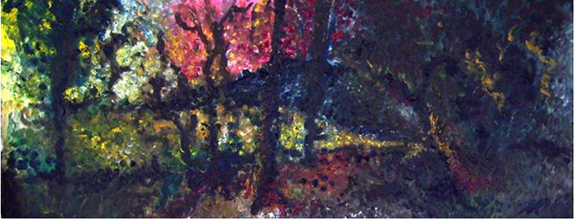
“My main influence in the devolpment of my style was Turner and his use of perspective, and the study of the way the human eye curves perspective. I exagerated this and began to put the stories and myths I loved so much into my work.
I discoved from my reading of Anglo-Saxon myths the history and culture that went with them, and how in the early period the culture was much more shamanic in feel than the later medivial time. I began to visit the location of many of the stories, to see the places and graves of long forgotton kings, sites where great battles were fought, doomed romances took place and to see how the myths in this close but also alien culture were heavily tied into uniting the people with the land and the seasons. I painted on site, hour after hour, creating many rough drawings and sketches, and then in my studio combining them into my now devolping style.”
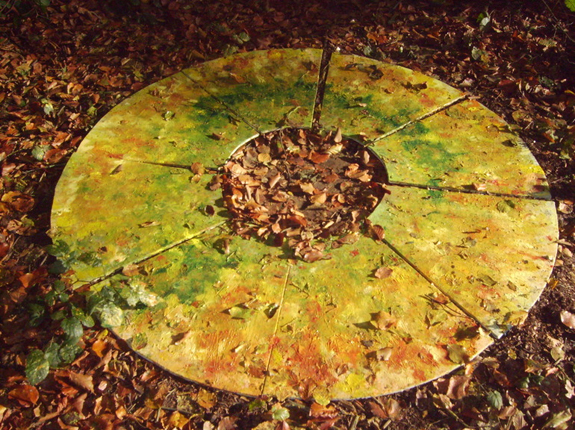
I understand that you attended Canterbury College of Art from 1993 – 1998, but had some troubles there. What was going on back then?
“My career as I was devolping this way of painting had its ups and downs. I went on from doing a BTEC at Canterbury Kent instituite of Art and Design (now UCA) to a degree. Here I hit a wall — the modern art world. The college was almost entirly given over to conceptual art and drawing and painting were almost not allowed. I of couse did not stand for this and soon found myself expelled for several high profile arguments about the nature of art. I then discovered the Stuckist art movement which grew as a counter reaction to this way of thinking.”
You were a founding member of the Maidstone Stuckists. Can you tell us a little bit about that and about what drew you to Stuckism?
“The Maidstone stuckists came about as a result of a group of us in Maidstone talking about how much we admired the main group of stuckists in London and Chatham. There were quite a few artists in maidstone who always use to drink in the goth/punk/alternative pub in Maidstone called The Minstrel, we always talked about our ideas and how much we disliked the artistic establishment, most of us having been spat out of the system at one point or other. I talked to Charles Thompson (one of the two people who formed the main body of the Stuckists) and he invited us to form our own subgroup, christened the “Maidstone Stuckists”. We were mixed between artists and poets with an aim toward getting some sort of artistic comunity going in Maidstone. We all liked myths and the artwork, stories, poems influenced by them, so had a good comon grounding together and thought this would be a good base from which to grow. We started to hold twice-weekly meetings in different pubs in Maidstone, put on shows wherever we could, and often had other Stuckist artists from other groups showing their work with us.”
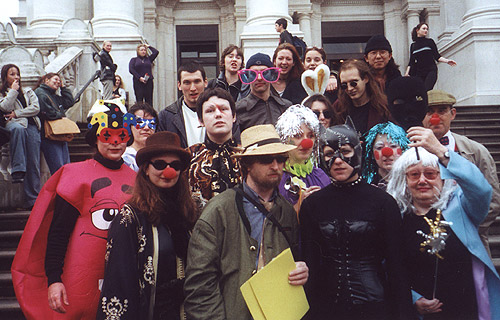
“Sadly over time we all started to get hit by life, the meetings and shows happened less often, untill they faded out all together. After the movement died down, I went back to art college again. This one was also in Canterbury, but this time I attended Christ Church University’s very good art department, also known as Slade by the Sea. Here I found myself getting lots of new ideas, and really learnt how to do life drawing very well. I studied anthroplogy and ancient art, especially Anglo-Saxon and Sami art. I wrote my dissertation on the art of the Sami, falling in love with their culture after making a very good Sami freind on a walking holiday in Sweden. For my reseach I travelled around the arctic circle area of Norway, Sweden and Finland, looking at art from 10,000 years ago to the present day in remote but very friendly villages.
I’ve now finished and have a B.A and M.A in fine art, and am introducing the ideas and ways of working I’ve learnt into my mytholgical paintings, as well begining to explore China, and learning about the culture there.”
Why do you think you’re drawn to working with myths and old stories?
“This is a tricky one to put into words. One of the things that attracts me is their closeness, yet at the same time alien nature, to our culture. The whole Wade/Weyland cycle of myths, for example, feels so alien to our modern sense of morals, especially the central piece of the Weyland story where he gets vengeance on those who wronged him. I know there are vengeance stories in our modern times, but Weyland’s revenge is shown as a positive as opposed to, say, a modern tale where unless one is a psycopath, one feels guilt for taking revenge, even if one is justified.
The story of Weyland’s father Wade goes further into my area of interest than his son’s tales which, although a good read, doesn’t really tie the people and the landscape together. Wade is scattered all over Kent — for example Watling street, which goes from one end of the county to the other, bears his name (‘Wat’ being another version of Wade). I also strongly suspect — but haven’t fully delved into the idea yet — that St. Nicholas and Wade have some connection. These tales — where the very essence of the land has been reborn into heroes, gods and monsters — are what inspire me. The landscape we live in can possess us to such an extent that we need the myths and stories to become one with it.”
Which of these stories do you love best?
“I would say, without doubt, that even though not an old mytholgy but a re-imagined one, the tales from Tolkein’s “Silmarillion” (especially the tale of Lúthien and Beren), have had a lasting influence on me. I’ve found many versions of this tale from “real” myth, but still the Tolkein version is the one that moves me inside. That conquering of death and giving your all to the one you love, the way it is written, the depth in the echoing of older stories it’s built on — everything about that story from the moment I first read it has capitaved me.”
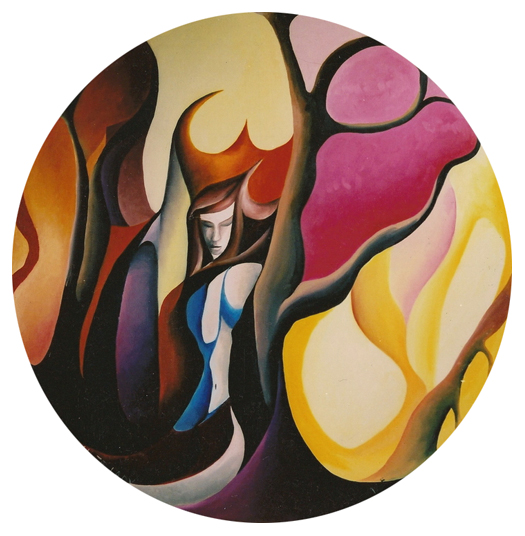
This can be a difficult question for artists to answer, but which of your own paintings do you love best?
“My favorite painting is Sundeomma. The place where I based it on is a very (for Kent) remote valley in the heart of the North Downs, which always seems to me like it has the real feel of nature and myth in it. The story for that painting I sort of made myself; I was inspired while walking the Downs — nothing complex, just the meeting of the day and night. I plan to paint from there again one day, this time using the shadow-like stories I am begining to read about from the Bronze age, stories that only seem to exist as ghosts within other tales and the strange rock art from this time.”
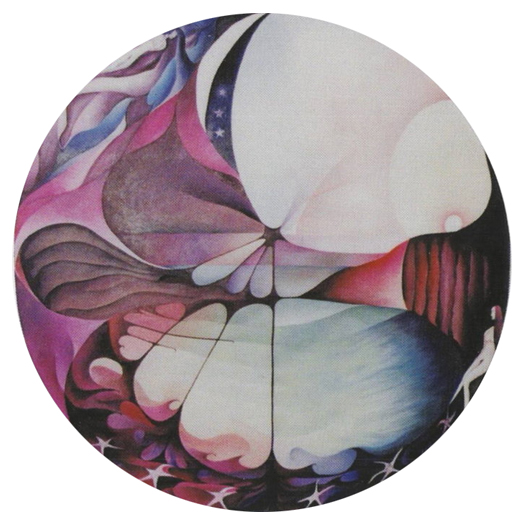
And finally, what do you hope to achieve with your work?
I see my mytholoical paintings as in many ways forming the third part of this triangle between the landscape where we live and die, the stories and myths that tie us to the land and visual images uniting the two. I want to give people a new way of seeing what at first glance might be just a small wood, an isolated hill.”
